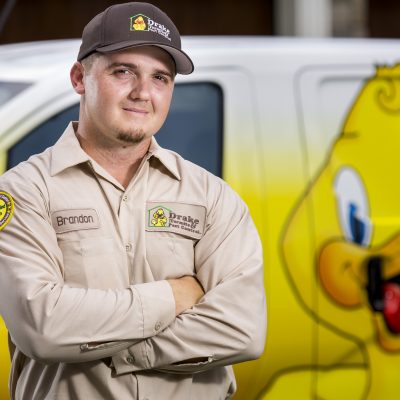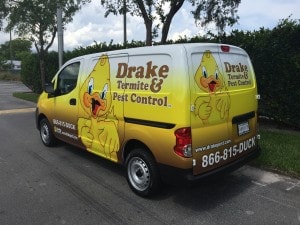Preparing your home for pest control treatment is essential to boosting effectiveness. Proper preparation helps pest control technicians access key areas and apply treatments thoroughly. Many Florida homeowners rely on these services to eliminate common household pests such as cockroaches, ants, bed bugs, and termites.
A well-prepared home can make a significant difference in the success of the pest control visit. If the infestation isn’t extreme, DIY solutions can work for you. However, pest control Tampa, Florida, is better if a professional pest control company eliminates pests.
In this guide, we provide homeowners with step-by-step instructions on how to prepare their homes for a pest control appointment, ensuring the best results.
How to Prepare Your Home for Pest Control Treatment
Thorough home preparation and post-treatment care play a crucial role in ensuring the success of any pest control service. When hiring professional technicians, here’s how to prepare your home:
Cleaning Your Home Thoroughly Before the Pest Control Visit
Pests are often attracted to food crumbs, trash, and damp areas, so reducing these factors through a thorough cleaning can improve the effectiveness of the treatment.
Vacuuming carpets and rugs, wiping down surfaces, and disposing of food waste are essential tasks before the technician arrives. Removing any standing water sources is important, as insects and rodents thrive in damp environments.
Homeowners should focus on areas where pests are most commonly found, such as kitchens, bathrooms, and basements. Cleaning behind and underneath small appliances like toasters and microwaves can help eliminate food debris that attracts pests.
Replacing the vacuum bag immediately after cleaning prevents pests from re-entering the home. By taking these steps, you can ensure that treatments work effectively.
Properly Storing Food and Kitchen Items
Before the pest control appointment, all food items should be stored appropriately to prevent contamination from pest control treatments. Food should be placed in airtight containers, and perishable items should be stored in the refrigerator.
Even small food crumbs left behind can attract pests, so wiping down countertops and cleaning floors is crucial. Pet food and water bowls should also be removed during the treatment to prevent chemical exposure.
Another critical step in home preparation is covering or storing small kitchen appliances. Coffee makers, toasters, and blenders can collect dust and residues from pest control treatments. So, keeping them covered or stored away helps maintain cleanliness.
Proper storage of food and kitchen items ensures the treatment is safe and effective, reducing the risk of future pest infestations.
Preparing Your Furniture and Personal Belongings
Furniture should be moved away from the walls and windows to allow the pest control specialist to treat all necessary areas. Creating access to baseboards and corners ensures that the technician can apply the treatment where pests typically hide. Beds, couches, and chairs should also be inspected for signs of bed bugs or other insects. Here are the top ten pests that commonly invade homes.
Closets and cabinets should be organized, with clothing and personal items stored in sealed bags or containers. If termite treatment is being performed, wooden furniture and flooring should be inspected for signs of damage.
Any loose fabrics, such as damp towels or bedding, should be washed in hot water to remove potential pest eggs or larvae. By taking these steps, you can maximize the effectiveness of your pest control service and prevent pests from returning.
Securing Pets and Aquariums During Treatment
During the pest control visit, pets should be kept in a safe area away from the treated rooms. Some treatments contain chemicals that could harm pets, so they must be removed from the treated areas.
It is recommended that fish tanks be covered with a damp towel and the air pump turned off to prevent chemicals from contaminating the water. Pet bedding and toys should also be washed or stored away to avoid exposure to the treatment.
If a pet has recently been treated for fleas or ticks, informing the pest control technician can help coordinate the best approach to pest control. Properly securing pets and aquariums ensures they remain safe during and after the service.
Preparing for Pest Control in Bedrooms and Living Spaces
Bedrooms and living areas should be decluttered before a pest control treatment. Removing items stored under beds and in closets allows technicians to inspect and treat these areas thoroughly.
If bed bugs are a concern, washing and drying all bedding, pillowcases, and sheets on high heat is recommended to eliminate any hidden pests. Furniture should be moved slightly away from walls to give the pest control technician better access to cracks, corners, and crevices.
Floors should be vacuumed to remove food crumbs, pet hair, and other debris that could attract pests. Proper home preparation boosts pest control treatment, making them more effective and long-lasting.
Handling Waste and Trash Disposal Before Treatment
Trash and waste should be removed from the home before the pest control visit. Overflowing trash cans can attract cockroaches, ants, and rodents, making pest control treatments less effective.
Trash bins should be emptied, and garbage should be taken outside in sealed bags to prevent insects and rodents from finding food sources. Any organic waste, such as food scraps, should be appropriately disposed of before treatment.
Cleaning trash cans with hot water and mild detergent can help eliminate lingering odors that attract pests. By handling waste disposal in advance, homeowners can help pest control treatments work more efficiently in eradicating pests.
What to Expect After the Pest Control Treatment
After the appointment on a property, you should follow specific guidelines pest control specialists provide to ensure effectiveness. Keep windows closed for a few hours after the service to allows treatments to settle and work as intended. Do not clean floors and surfaces immediately, as this may remove the treatment before it takes full effect.
Your pest control technician may recommend avoiding certain areas of the home for a set period. Checking for dead insects and rodents in the following days can indicate the success of the treatment.
If a follow-up visit is needed,you can schedule another appointment with the pest control specialist to ensure long-term prevention. By adhering to post-treatment instructions, you can maintain a pest-free environment and prevent re-infestations.
Enjoy a Pest-Free Home With Drake Lawn & Pest Control Tampa
You’ve done the prep—now let the professionals handle the pests. Drake Lawn & Pest Control Tampa offers expert, Florida-focused treatments to eliminate infestations and protect your home. Schedule your service today and enjoy a cleaner, safer, pest-free space


